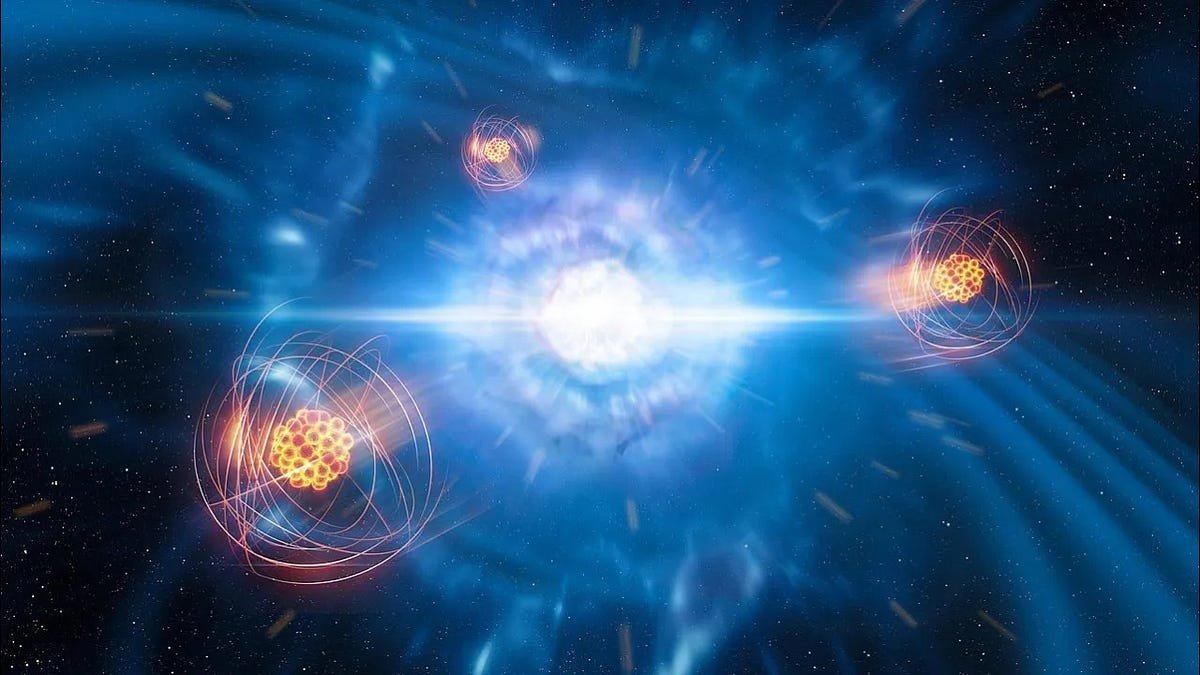From LIGO, there weren’t enough neutron star-neutron star mergers to account for our heavy elements. With a JWST surprise, maybe they can.
Where do the heaviest elements in the Universe come from? If you were like most astrophysicists during the 20th century, you might’ve said from supernova explosions: stellar cataclysms that occur either within the cores of massive stars or from stellar corpses (white dwarfs) that undergo destructive, energy-releasing events that trigger a rapid succession of nuclear fusion reactions. Unfortunately, a comprehensive study of these classes of events — including both type II (core-collapse) and type Ia (exploding white dwarf) supernovae — showed that, although they do produce large sets of fusion reactions, they really only produce elements up to about zirconium (element #40) on the periodic table.
Beyond that, or for more than half of the known elements that exist, a different set of processes are required. While the slow neutron capture process (s-process) can occur within evolved, Sun-like stars, accounting for large fractions of certain elements, such as niobium, tin, barium, and lead, the majority of heavy elements require another process to explain their observed abundances.

